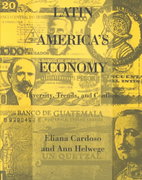Question
Chapter 4 1.Suppose the utility function for a firm manager is U = + bQ, where Q is output, is profit, and b is a
Chapter 4
1.Suppose the utility function for a firm manager is U = + bQ, where Q is output, is profit, and b is a positive constant. How would the firm's output compare with what it would be if the manager's objective was to maximize profit?
A.
It would be greater than the profit-maximizing output.
B.
It would be less than the profit-maximizing output.
C.
It would be the same as the profit-maximizing output.
D.
None of the statements is correct.
2.Suppose a consumer with an income of $100 is faced with Px = 1 and Py = 1/2. What is the market rate of substitution between good X (horizontal axis) and good Y (vertical axis)?
A.
0.50
B.
-1.0
C.
-2.0
D.
-4.0
3.The difference between a price decrease and an increase in income is that
A.
A price decrease does not affect the consumption of other goods, while an increase in income does.
B.
An increase in income does not affect the slope of the budget line, while a decrease in price does change the slope.
C.
A price decrease decreases real income, while an increase in income increases real income.
D.
A price decrease leaves real income unchanged, while an increase in income increases real income.
4.joe prefers a three-pack of soda to a six-pack. What properties does this preference violate?
A.
Completeness
B.
Transitivity
C.
More is better
D.
Diminishing MRS
5.Which of the following is true?
A.
Indifference curves may intersect.
B.
At a point of consumer equilibrium, the MRS always equals 1.
C.
If income increases, a consumer will always consume more of a good.
D.
None of the statements is correct.
6.If the price of good X is $10 and the price of good Y is $5, how much of good X will the consumer purchase if her income is $15?
A.
0
B.
2
C.
3
D.
Cannot tell based on the above information.
7.Individuals who purchase services and goods for the purpose of consumption are:
A.
consumers.
B.
managers.
C.
workers.
D.
agents.
8.What is/are the important things that must be developed when characterizing consumer behavior?
A.
Individual goals of the firm
B.
Consumer opportunities
C.
Individual goals of the firm and consumer opportunities
D.
Consumer preferences and consumer opportunities
9.The possible goods and services a consumer can afford to consume represents the:
A.
consumer behavior.
B.
consumer preferences.
C.
consumer status.
D.
consumer opportunities.
10.A situation where a consumer says he does not know his preference ordering for bundles X and Y would violate the property of:
A.
more is better.
B.
completeness.
C.
substitutability.
D.
complementarity.
Chapter 5 Questions
1.Suppose the marginal product of labor is 8 and the marginal product of capital is 2. If the wage rate is $4 and the price of capital is $2, then in order to minimize costs the firm should use:
A.
more capital and less labor.
B.
more labor and less capital.
C.
three times more capital than labor.
D.
none of the answers are correct.
2.Suppose the production function is Q = min{K, 2L}. How much output is produced when 4 units of labor and 9 units of capital are employed?
A.
2
B.
4
C.
8
D.
9
3.Suppose the production function is given by Q = 3K + 4L. What is the average product of capital when 10 units of capital and 10 units of labor are employed?
A.
3
B.
4
C.
7
D.
45
4.Suppose the production function is given by Q = 3K + 4L. What is the marginal product of capital when 10 units of capital and 10 units of labor are employed?
A.
3
B.
4
C.
11
D.
45
5.Suppose the production function is given by Q = min{K, L}. How much output is produced when 10 units of labor and 9 units of capital are employed?
A.
0
B.
4
C.
9
D.
13
6.Suppose the production function is given by Q = min{K, L}. How much output is produced when 4 units of labor and 9 units of capital are employed?
A.
0
B.
4
C.
9
D.
13
7.Suppose the production function is given by Q = 3K + 4L. What is the marginal product of capital when 5 units of capital and 10 units of labor are employed?
A.
3
B.
4
C.
11
D.
45
8.Suppose the production function is given by Q = 3K + 4L. What is the average product of capital when 5 units of capital and 10 units of labor are employed?
A.
3
B.
4
C.
11
D.
45
9.For the cost function C(Q) = 100 + 2Q + 3Q2, the marginal cost of producing 2 units of output is:
A.
2.
B.
3.
C.
12.
D.
14.
10.For the cost function C(Q) = 100 + 2Q + 3Q2, the average fixed cost of producing 2 units of output is:
A.
100.
B.
50.
C.
3.
D.
2.
Step by Step Solution
There are 3 Steps involved in it
Step: 1

Get Instant Access to Expert-Tailored Solutions
See step-by-step solutions with expert insights and AI powered tools for academic success
Step: 2

Step: 3

Ace Your Homework with AI
Get the answers you need in no time with our AI-driven, step-by-step assistance
Get Started


